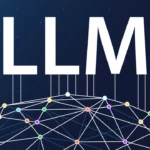The future of urban living took center stage this week as New York City unveiled a suite of cutting-edge artificial intelligence initiatives at Smart City Expo USA, positioning itself as a global leader in municipal technology. From traffic management systems that learn in real-time to AI-powered building inspections, the city’s demonstrations offered a compelling vision of how machine learning could transform everyday urban experiences.
A Living Laboratory for Urban AI
New York’s showcase went far beyond theoretical applications, highlighting concrete implementations already making waves across the five boroughs. The city’s Chief Technology Officer, Matthew Fraser, emphasized this hands-on approach: “We’re not just talking about smart cities—we’re building one. Every project you see here addresses real New Yorkers’ needs while respecting privacy and equity concerns that keep many cities from moving forward.
Among the most impressive demonstrations was the city’s adaptive traffic control system, which uses reinforcement learning to optimize signal timing across 14,000 intersections. Unlike traditional systems that follow preset patterns, this AI solution analyzes real-time traffic camera feeds, emergency vehicle locations, and even subway congestion to dynamically adjust signals. Early results from a Bronx pilot showed 27% reductions in afternoon commute times—numbers that could revolutionize mobility in a city where the average driver spends 56 hours annually stuck in traffic.
The AI Guardians of City Infrastructure
Perhaps the most immediately impactful application came in the realm of public safety. The Department of Buildings showcased their AI-assisted inspection platform that combines drone imagery with machine learning to identify potential structural issues. The system can detect cracks, corrosion, and other defects with 94% accuracy—a significant improvement over human-only inspections. Importantly, the technology doesn’t replace inspectors but flags areas needing urgent attention, allowing the chronically understaffed agency to prioritize its resources.
“Last year, this system helped us catch critical facade issues at 37 buildings before they became emergencies,” explained Buildings Commissioner Jimmy Oddo. “That’s 37 potential tragedies prevented because AI gave our teams X-ray vision for the city’s skeleton.”
Ethical Foundations for Municipal AI
What set New York’s presentation apart was its thoughtful approach to the ethical dilemmas surrounding municipal AI. The city unveiled its Algorithmic Transparency Initiative—a first-of-its-kind framework requiring all city agencies to publicly document the purpose, data sources, and potential biases of their AI tools before deployment.
Harvard’s Smart Cities Project Director, Dr. Alicia Rouault, praised the move: “New York isn’t just deploying flashy tech—they’re creating the governance models other cities will copy. Their transparency portal could become the gold standard for responsible AI implementation at scale.”
The city also announced a partnership with CUNY to train 5,000 civil servants in AI fundamentals by 2025, ensuring that technological decisions remain grounded in public service values rather than vendor promises.
From Trash Collection to Tenant Rights
The expo revealed how AI is quietly revolutionizing even the most mundane municipal services:
- Smart Waste Management: Sensors in 23,000 city trash cans now predict fill-rates, reducing collection costs by $3.2 million annually while cutting rodent-attracting overflow
- Language Access: Real-time translation AI in 311 calls has reduced average hold times for non-English speakers from 8 minutes to 90 seconds
- Housing Protection: A new tool cross-references rental listings with city records to identify potential illegal apartments before tenants move in
Perhaps most compelling was the NYPD’s restrained approach to predictive policing. Unlike controversial programs elsewhere, New York’s system focuses entirely on infrastructure—using AI to recommend where to deploy mobile light towers and cameras based on historical crime patterns and urban design factors, without individual profiling.
The Business of Urban Innovation
The economic implications became clear as Deputy Mayor Maria Torres-Springer announced the city’s new Urban Tech Hub at Brooklyn Navy Yard. The 84,000-square-foot facility will house startups developing smart city solutions, with $25 million in city funding to support technologies that address New York’s specific challenges.
Every urban AI solution we develop here becomes an export product,” noted Torres-Springer. The traffic management system we built for Queens could soon be adapted for Mumbai or Mexico City—with New York companies leading that transformation.
Indeed, several NYC-born technologies already have outposts abroad. The LinkNYC kiosk system, initially met with skepticism, has inspired similar networks in London and Singapore, while the city’s food inspection algorithms have been licensed to Chicago and Los Angeles.
Challenges on the Smart City Frontier
For all its successes, New York’s presentation didn’t shy away from failures. A much-hyped AI-powered graffiti removal system proved too expensive to scale, while an automated park maintenance scheduler failed to account for localized weather variations. These admissions lent credibility to the city’s overall approach—treating AI as a tool for iterative improvement rather than magic wand.
Privacy advocates at the expo raised concerns about data collection scales, though most approved of the city’s strict data minimization policies. They’re collecting traffic patterns, not license plates; building facades, not residents’ windows,” noted ACLU technologist Harlan Yu. “That distinction matters tremendously.”
As the expo closed, two announcements hinted at New York’s next frontiers: a pilot using AI to optimize emergency vehicle routing during crises, and a blockchain-based system for tracking carbon emissions from city buildings. Both projects reflect Mayor Adams’ mandate to make New York the “most forward-thinking city on Earth”—a title increasingly supported by technological substance rather than mere aspiration.
What emerged most powerfully from the showcase wasn’t any single technology, but a replicable model for responsible innovation. By focusing on measurable quality-of-life improvements, maintaining robust oversight, and building homegrown expertise, New York is writing a playbook for how cities can harness AI’s potential without sacrificing democratic values.
As cities worldwide grapple with climate change, inequality, and infrastructure decay, New York’s demonstration suggested that artificial intelligence—when thoughtfully applied—might just help civilization solve its oldest problems through its newest tools. The ultimate smart city innovation may be proving that technology and humanity can advance together rather than at cross-purposes.
For urban planners, technologists, and citizens watching the expo, the message was clear: The future of cities isn’t just about being smart—it’s about being wise. And in that race, New York has taken an indisputable lead.
















Add Comment